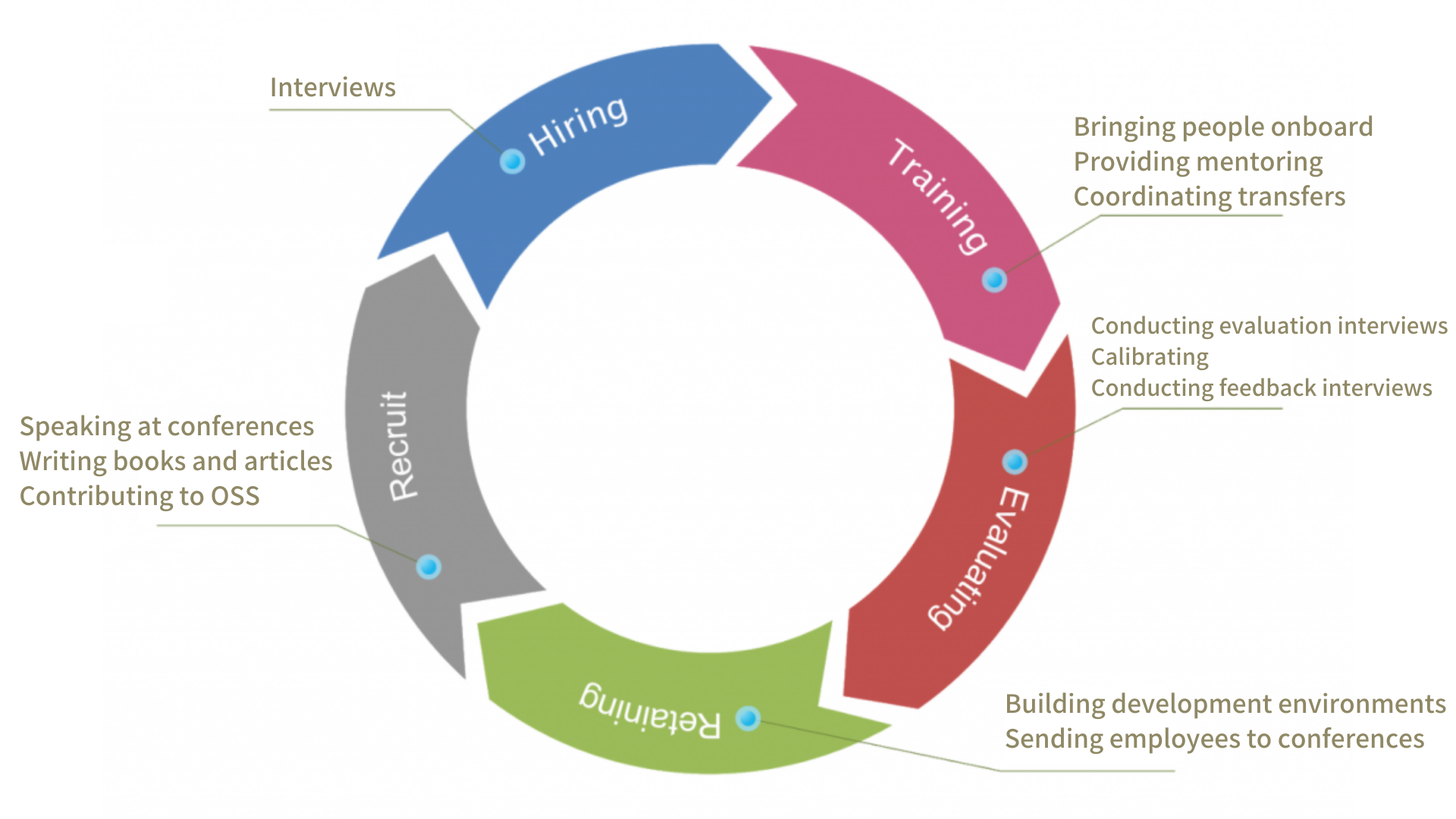* This article is a translation of the Japanese article written on September 11, 2020.
This article is for day 20 of Merpay Tech Openness Month 2020. Hello. This is Hideo Kimura (@hidek), VP of Engineering at Merpay.
Introduction
At Merpay, the VP of Engineering and the Engineering Managers (EMs) are committed to working closely with HR on people management within the Engineering Division. People management here refers to a positive cycle in which we hire, train, evaluate, retain, add talent to the market, and then hire even better talent to contribute to the entire organization.
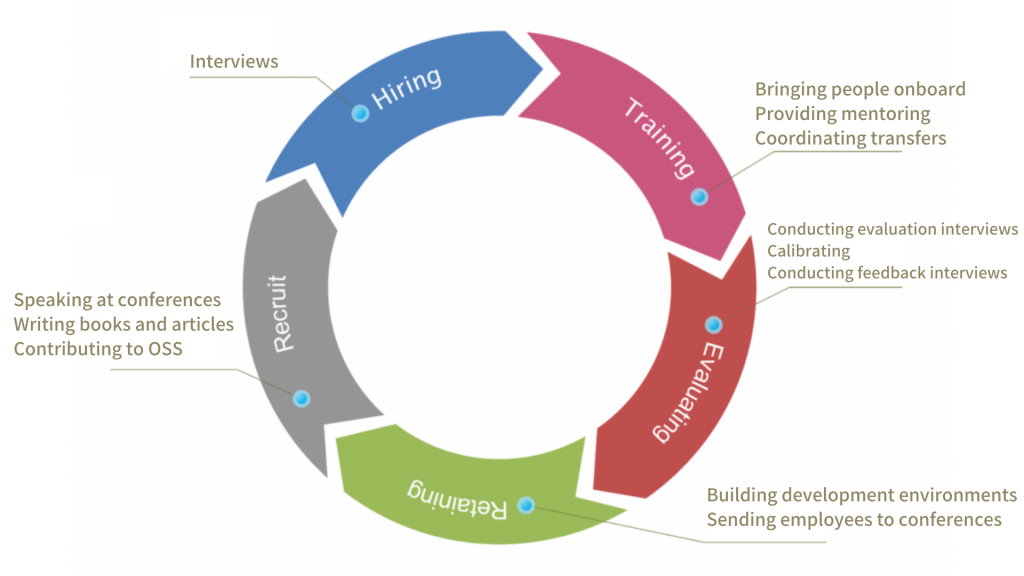
In this article, I’ll be covering the “rotation program” we created following discussion between EMs on retention.
Making a process of “challenge”
It’s been more than a year and a half since the Merpay product was released. If we include the development period prior to release, that’s more than two and a half years.
During that time, our teams stabilized and were no longer able to provide the same kind of opportunities to Go Bold, resulting in a sense of boredom becoming an issue among EMs.
We didn’t have systems in place to provide challenges, with EMs instead working one-on-one with team members to identify the challenges they’d like to take on. However, they weren’t able to catch everything, and some team members ended up seeking challenges outside the company. In order to resolve this issue, we organized a “rotation program” as a system for actively encouraging team members to challenge themselves. We then established it as a proper process within the company.
Our “rotation program” consists of three types of rotation:
- Role rotation
- Assignment rotation
- Skill rotation
Role rotation
The easiest way to explain this is with an example, such as changing the role of a Tech Lead (TL) to an EM. This kind of rotation has already been converted into a process.
At Mercari and Merpay, EM is not a position but is instead a role. EM is a role, so an EM can revert back to being a TL or IC (Individual Contributor) if they aren’t suited to the challenge or prefer to commit to non-management work. This provides the individual with an “out” if they feel they aren’t right for management, and it helps to reduce the psychological hurdle that tends to prevent many engineers from getting into management.
Whether an individual is suitable as a TL or EM depends on that individual, so we designed the system to take this into account. Once an individual indicates what they want to do, the EM recommends that person, and we then conduct a meeting to decide on the final assignment.
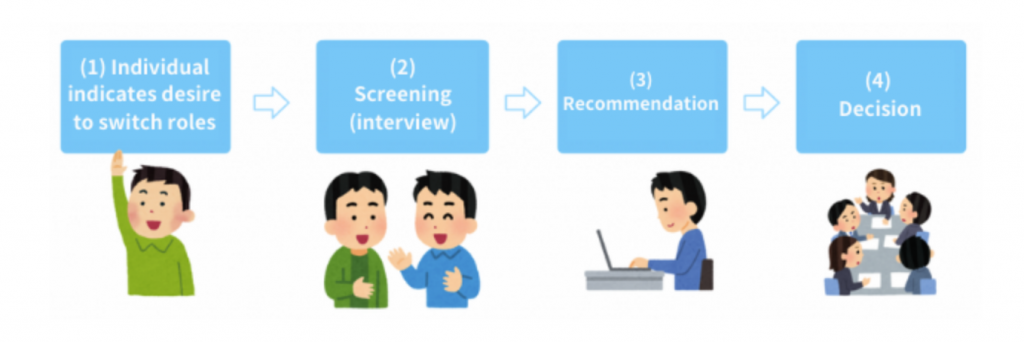
Assignment rotation
In this type of rotation, only the assignment is changed, and not the role or skills. For example, our backend at Merpay uses a microservices architecture. If someone does development work in the same domain, they’ll accumulate knowledge in that domain, which will increase the speed and quality of their work in developing new products or services or in improving and running existing products or services.
However, this can make an organization more reliant on specific individuals, and people may become bored with their assignments and less motivated. Although the company might choose to gather resources in certain focus areas depending on the phase the company is in, our goal was to empower employees to take on new challenges bottom-up, rather than simply allocate resources from this top-down perspective.
In order to turn this into a process, we first needed to let people know what other teams were out there. EMs posted Team Descriptions (TDs) on the portal containing transparent information on each team’s mission and whether that team is currently looking for people, so that anyone could get an idea of what is going on throughout the organization. These TDs are also useful in a compartmentalized organization to help teams understand what other teams in the same organization are doing.
The process begins with an employee indicating they want to be transferred. However, we want to prevent people from simply hopping from job to job, so we have set some conditions. First, the individual looking to transfer must have been in their current team for at least a half a year. Second, the team the individual wants to transfer into must be looking for help. The second condition was set to prevent too many members joining the same team. The individual then meets with the EM in the destination team for an interview, and a decision is reached on whether the transfer would be a good match. If the transfer is approved, the EMs in both teams plan and coordinate the transfer of control that will take place over a period of around one quarter.
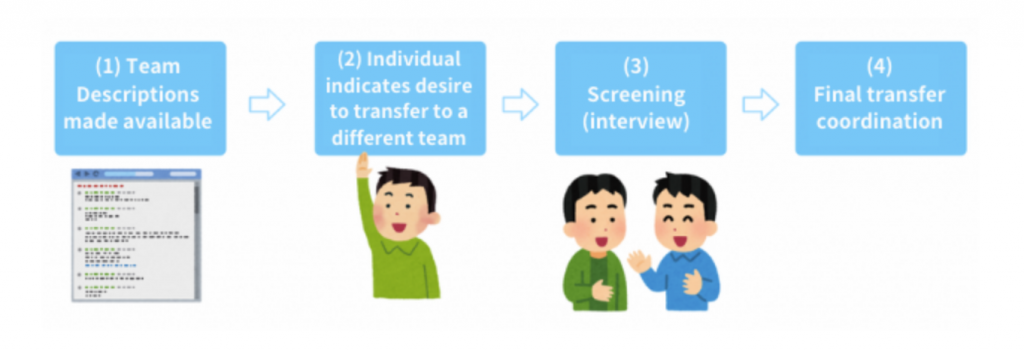
Skill rotation
As the number of services and products grows, it becomes increasingly difficult for someone like a full-stack engineer to cover development of multiple functions by themselves. Engineers are also increasingly required to have deeper knowledge in individual areas of technology, as technology becomes more complicated. This can result in skill compartmentalization, which is harmful for an organization.
In response, we added skill rotation as a means of allowing employees to challenge themselves in new areas of technology. For example, our process could allow a backend engineer to work on iOS, or a frontend engineer to work on the backend.
We use the same general screening process we use for outside hires. If the new skill requires a technical assessment, the individual would need to complete the assessment first.
The most difficult thing about skill rotation is evaluation. If a senior engineer with a certain skillset tries working in a position requiring a new skillset, they’ll probably run into a skill gap. This would normally have a negative effect on their evaluation, and could prevent people from challenging themselves in new areas.
At Merpay, we decided to evaluate someone who is attempting to learn a new skill as though they are expanding their entire skillset. Our evaluations place greater weight on previous skills at the beginning of a new assignment. We also have a trial period to serve as a safety net, so that an employee can return to their original team if the change wasn’t a good match. This helps motivate people to challenge new things.
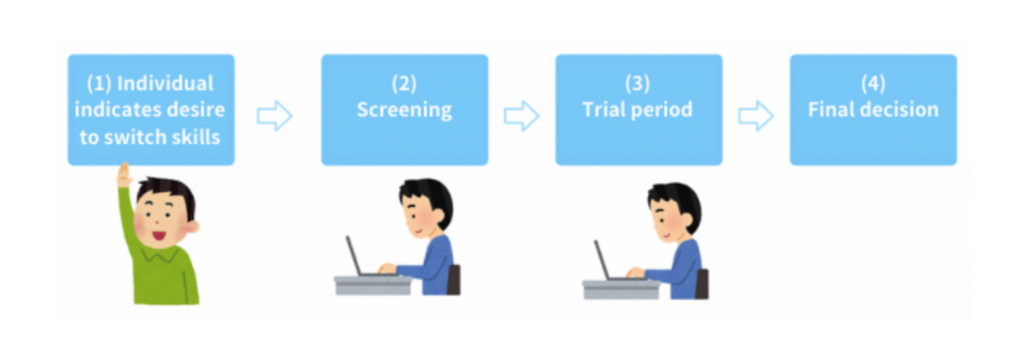
The importance of “slack” and challenges
Our policies can help team members to stay motivated, but tackling new challenges can also temporarily reduce the overall speed at which people work.
However, medium- to long-term challenges can promote individual growth, and I believe that this can result in growth for the organization overall. Toward that end, I believe it’s up to us to determine how to give enough “slack” to people to challenge themselves.
We’ll need to focus on giving enough slack or leeway to employees to tackle new challenges in a way that maintains planning ability, rather than ignoring business priorities, providing individuals with too much latitude, or tackling challenges that won’t result in new products or businesses.
I think there’s a lot that individuals can do, such as saving time by reducing labor or automating tasks, or making communication easier by standardizing projects. I want teams to use the time they save as a bugger, so that individuals can tackle meaningful challenges.
Our CTO (@sowawa) once again began advocating the importance of providing slack, and his recommendation of Tom DeMarco’s “Slack” resulted in a mini-boom in popularity for the concept within the company. It’s not totally related to today’s article, but I definitely recommend giving it a read.
[Img]

In conclusion
These types of policies were originally shared implicitly and handled as the occasion called for it. Unfortunately, as the organization grew, some team members began to look outside the company for opportunities.
This was ultimately to be expected. However, I think with remote work having become commonplace, the process of organizing, visualizing, and sharing implicit knowledge has become even more important. By increasing everyone’s understanding, we can take advantage of new opportunities and increase motivation. I also believe this can help to build a workplace where both individuals and teams can grow. Please give it a try at your own company!
